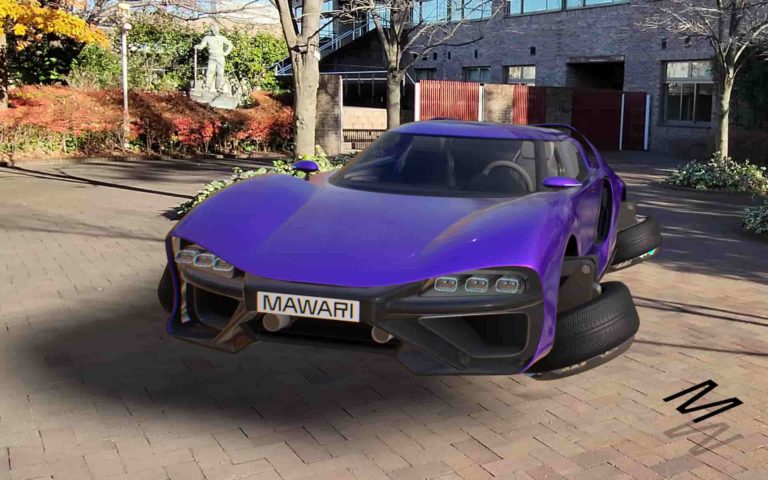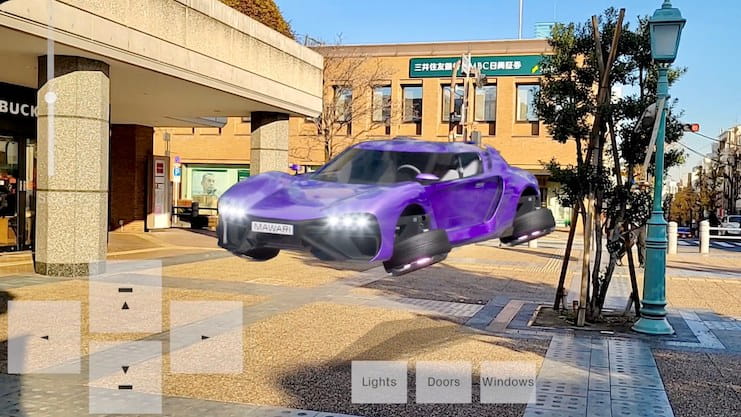
Tech revolutions have always taught us that the most impact comes from behind the scenes. Though consumer-facing products (think: Instagram, TikTok, etc.) steal the spotlight, back-end enabling tech (think: Akamai, Cloudflare, etc.) does the heavy lifting.
These are the proverbial picks and shovels in the gold rush, and they’ll likewise power the next big shift. Yes, we’re talking about the metaverse. We’re already seeing a land grab of consumer-facing brands announcing metaverse strategies – everyone from Disney to Daimler.
But unsung heroes are likewise starting to build out the metaverse’s infrastructure and connective tissue. And prominent on that list is Mawari. Already proven in AR compression and cloud rendering, it plans to bring the metaverse beyond its early-stage hype cycle.
The company accelerated that mission this week through its launch on AWS Marketplace. There, its 3D content streaming platform will enable companies to deploy interactive 3D content to the various flavors of metaverse apps that continue to develop in these early stages.
“We’re proud and happy to have the support of AWS to introduce our interactive 3DXR Content Streaming Platform.” said Mawari CEO Luis Ramirez. “It delivers rich, high-quality, interactive content while overcoming the otherwise intractable limitations of mobile XR devices.”
Precursor to the Metaverse
Before diving into its AWS integration, what does Mawari do and how can it help power the metaverse? Taking those questions one at a time, the company develops software for efficient compression, rendering, and delivery of graphically-intense and bandwidth-hungry content.
This is usually accomplished in two ways: widening the pipe and narrowing the content. The former is increasingly handled by faster networks such as 5G. And the latter is what we’ve traditionally seen with compression technologies like mp3. That’s where Mawari comes in.
Specifically, its 3D streaming CODEC renders heavy 3D content in the cloud – as opposed to doing so on underpowered smartphones – and streams it in compressed form to devices. This split-rendering taps into the beefier memory and computing resources of cloud servers.
“Simply put, we move the power and rendering burdens upstream to the cloud,” Ramirez explains, “then stream that content in real time to devices in a novel way that preserves the content’s richness.”
And the result? Mawari boasts up to 60x device power savings and a 100x bandwidth reduction. This takes form in a streaming platform that targets a wide addressable market including telcos, systems integrators, AR platforms, and hardware & software players up and down the AR stack.
This value proposition will be increasingly realized as AR evolves. For example, it’s often taken for granted that low-poly AR lenses are delivered and rendered nicely on your Snaps and selfies. But what about when more substantive AR content surrounds us?
Making it Happen Today
That brings us back to the metaverse. As we’ve examined, it has two tracks. The more-exposed track involves highly-immersive 3D experiences, often in the context of VR. But the second track involves AR experiences that evoke digital content to bring the real world to life.
This is known as the real-world metaverse – a term recently popularized by Niantic’s Lightship platform. It’s also known as the AR Cloud. Beyond Niantic, tech giants like Apple, Snap, Meta, Qualcomm and AMD are investing heavily to own a piece of this opportunity.
Use cases include everything from gaming and entertainment to utilities. The latter could involve navigation and local discovery, which are use cases Google has already developed with its Lens and Live View. Here, Google is highly motivated to future-proof its core search business.
So as the real-world metaverse materializes in various ways – accelerated through these motivated and massive tech-giant investments – we get closer to a day when AR activation opportunities surround us. And we’ll need smart architecture and enabling-tech to deliver it.
This is Mawari’s mission, which it likens to the Akamai of the metaverse. Like Akamai powered the web behind the scenes as the first modern content delivery network (CDN), Mawari wants to bring the physical-world metaverse to life as the first interactive CDN for 3D content.
“While everyone’s talking about the metaverse future, we’re making it happen today.” said Ramirez. “Our purpose-driven mission empowers global developers with the right tools and infrastructure to bring the physical-world metaverse to life across a range of XR devices.”
 Image source: Mawari
Image source: Mawari
AWSome Enabler
That brings us full circle to Mawari’s new AWS integration. Going deeper, it will bring all of the above capabilities to AWS Wavelength. For those unfamiliar, Wavelength is the branch of AWS that focuses specifically on low-latency applications for 5G devices.
Mawari kicks off this integration with its Digital Human as a Service (DHaaS). This features 3D-streamed multilingual avatars and digital content in tandem with indoor and outdoor spatial mapping. The outcome is realistic and hardware-agnostic 3D graphics on real-world locations.
“DHaaS is the first demonstration of the capabilities in Mawari’s 3DXR content streaming platform” says Ramirez. “It enables accurate delivery of interactive, personalized, geo-local 3DXR experiences on smartphones and XR glasses.”
Altogether, this brings Mawari further down the evolutionary path as an AR enabler. This is an opportune segment of the spatial computing spectrum that we call AR as a Service. It’s only fitting that Mawari is doing so in tandem with one of the original SaaS innovators, AWS.
As you may remember, AWS empowered a generation of startups to launch and grow by democratizing a traditionally capital-intensive part of the tech stack. By doing so, it enabled developers to offload the burden of building on-site servers and focus instead on UX.
This is analogous to what Mawari endeavors to accomplish for a generation of metaverse startups. If it can do this effectively, it could accelerate the metaverse’s transition from a buzzy and ambiguous concept to a deployed and tangible technology that lives up to the hype.
For additional reading on Mawari, see Charlie Fink’s article in Forbes today, Mawari’s $20 Billion Codec.






